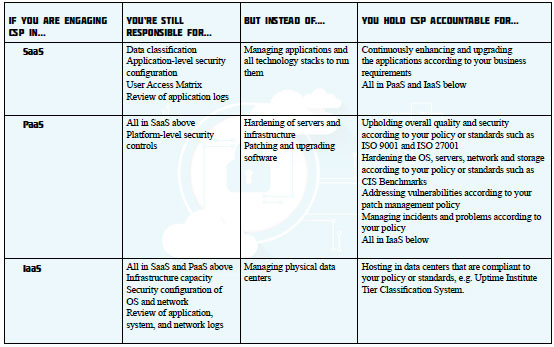THANK YOU FOR SUBSCRIBING

Andre Siregar, Chief Technology Officer, CCRmanager
According to the 2018 Cloud Computing Survey by IDC, nine out of ten companies will have some parts of their application or infrastructure in the cloud by 2019. Migration to the cloud is very much the norm in IT today and cloud budget continues to increase year after year. The IDC survey points out that the top two reasons for going to the cloud are “improving the speed of IT service delivery” and “greater flexibility to react to changing market conditions.” In other words, business agility is the top reason for cloud transformation.
At the same time, speed and agility are often at odds with IT security policies. The same IDC survey highlights that “security concerns” is the second leading barrier for cloud adoption. Moreover, cybersecurity is usually at the top of CIO’s agenda and investment priorities in 2019.How do we reconcile agility and cybersecurity protection in the cloud?
While at first glance the two seem to be clashing, it is possible to have both speed and security in the cloud. In my observation, the inefficiencies that prevent speed in the cloud are often caused by a lack of understanding of the “shared responsibility” model and by legacy processes written for on-premise data centres.
What is the “shared responsibility” model?
Cloud service providers (CSP) have evolved so much beyond mere providers of storage and server capacity. Today, most CSPs offer hundreds of services, which can be categorized as Infrastructure-as-a-Service (IaaS), Platform-as-a-Service (PaaS), and Software-as-a-Service (SaaS). You can think of these different categories as how much you want to outsource to the CSP.
As with all outsourcing arrangements, engaging with a CSP requires clarity of roles and responsibilities. The “shared responsibility” model must be understood so there is no duplication of work between you and the CSP, and accountability on security oversight is clear.
As you move from IaaS to PaaS and SaaS, you will be responsible for less, and the CSP will take responsibility and accountability for more. Please refer to the table below (note: non-exhaustive).
Your ability to outsource more responsibilities to the CSP will depend on how much you can trust them. It is critical, therefore, to establish this trust before the cloud engagement begins, then continue to hold CSP accountable. Many mature organisations perform a standardised onboarding process for their vendors, including auditing the CSP against the organisation’s security policies.
Today, most CSPs offer hundreds of services, which can be categorized as infrastructure-as-a-service (IaaS), platform-as-a-service (PaaS), and software-as-a-service (SaaS)

Holding CSP continuously accountable can be done through agreed performance expectations (for instance, metrics and KPI) and periodic management oversight meetings (for instance, monthly).Some mature organisations also require their Vendor Management team to perform annual evaluations on the CSP. Besides ensuring the CSP stays vigilant, annual vendor evaluation will also ensure the cloud arrangement stays aligned to your ever-changing business strategy.
Updating legacy processes for the cloud

Another frequent hurdle in cloud agility is legacy processes which were written in the context of on-premise data centre. Often, implementation of these processes does not take into account that faster executions are now possible through automation “as a service” on the cloud.
Here is one example: Many organisations have a policy that servers, networks, and environments must be configured according to security standards. Compliance to this policy is often the responsibility of the security team that would perform scanning on all servers, networks, and environments. This scanning activity is often done manually and therefore, only done at monthly or quarterly intervals.
Most CSPs now provide the ability to “codify” your security standards so you can perform automated scanning in real-time against them. Instead of compliance review every month or quarter, you can now be continuously compliant. Moreover, this scanning capability is provided “as a service” and therefore quick to implement and very affordable. In fact, the hurdle to implement this in many organisations is usually ignorance that such service even exists. Major CSPs invest billions of dollars in R&D and they introduce new features every week. Thus, your cloud journey must include monitoring and continuous assessment of these new offerings.
As different organisations are at different maturity stages in their cloud journey, my recommendation is to adopt a “continuous improvement” approach in updating your legacy policies and processes. Figure out where bottlenecks occur and where there are most security risks, then prioritise accordingly. Of course, in line with the security tools and process change, you should also train your staff with the skills required to utilise the services available in the cloud effectively.
In this article, I have only touched the security aspect of a cloud adoption journey. It is important to establish your security non-negotiable standards early in your cloud journey, so you can move on to other equally important areas such as business alignment, culture, and governance. Good luck!













